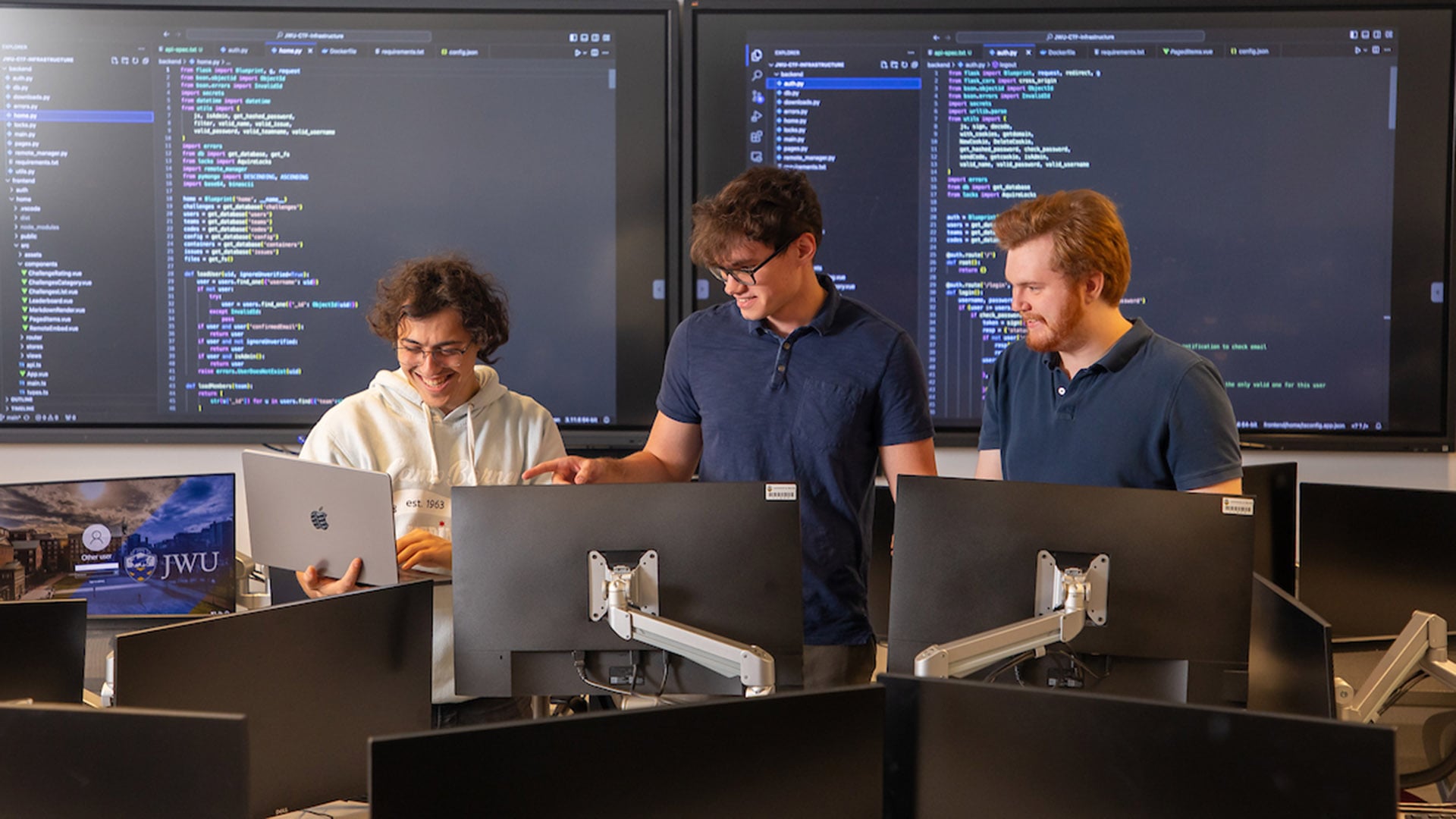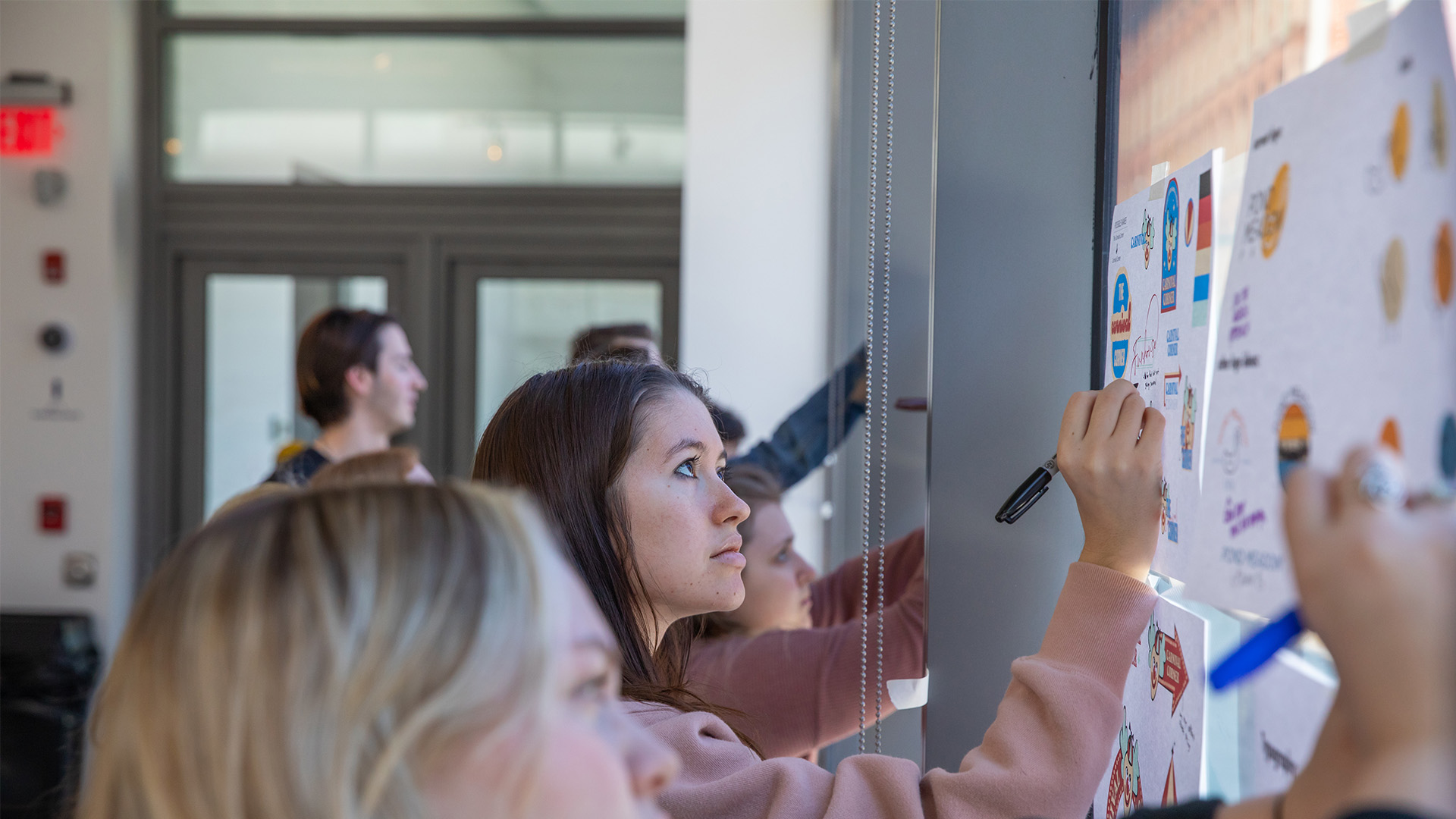JWU Biomedical Engineering Program Brings Balance During Pandemic
This September, Johnson & Wales University welcomes its first class of students for the Biomedical Engineering bachelor’s degree program. Associate Professor Nicole H. Urban, Ph.D., will be one faculty member teaching classes in this program. Here she takes us through the different areas and disciplines the program will focus on to offer students a competitive advantage.
 Urban holds a bachelor’s degree in Biomedical Engineering from Tulane University, a master’s degree in Mechanical Engineering with a focus in medical device design from the University of Alabama at Birmingham, and a doctorate in Biomedical Sciences jointly from Eastern Virginia Medical School and Old Dominion University. She completed postdoctoral training at Virginia Commonwealth University in the departments of Biochemistry and Orthopedics.
Urban holds a bachelor’s degree in Biomedical Engineering from Tulane University, a master’s degree in Mechanical Engineering with a focus in medical device design from the University of Alabama at Birmingham, and a doctorate in Biomedical Sciences jointly from Eastern Virginia Medical School and Old Dominion University. She completed postdoctoral training at Virginia Commonwealth University in the departments of Biochemistry and Orthopedics.
She worked as a postdoctoral researcher and consultant at the University of Colorado, Colorado Springs on a variety of projects related to mathematical modeling of cell signaling cascades. She has six years of experience in intellectual property and medical device analysis. She joined JWU in 2016 and primarily teaches physics courses and introduction to life science. Her research and professional interests include biosensor development for remote monitoring and rehabilitation, increasing access to the understanding of intellectual property for university technology transfer and innovation ventures, and the development of educational products focused on just-on-time remediation of applied mathematics skills.
What went into building the new Biomedical Engineering program?
The first step in building the program was to determine the ABET (Accreditation Board for Engineering and Technology) accreditation standards for a Biomedical Engineering (BME) program. This is a nonprofit organization that accredits applied and natural science, computing, engineering and engineering technology degree programs.
The closest existing program to Biomedical Engineering (BME) [at JWU] was the Robotics Engineering program, but there were also many similarities to the Electronics Engineering program. I worked with Associate Professor and Department Chair Kathryn Parchesco and Professor Sol Neeman, Ph.D., to understand the courses in these programs and the course sequence. Together we built a list of courses that would serve as the framework of the program. I also met extensively with Associate Professor and Department Chair [Science] Christos Dimos, Ph.D., to ensure that the science courses and laboratories were placed and sequenced accordingly. This took a lot of interdepartmental coordination, due to the interdisciplinary nature of BME.
The most exciting aspect of designing the program was the development of five new courses. I designed three of them to cover the most important aspects of biomedical innovation: Biomechanics, Biomaterials and Medical Imaging Modalities. A medical device elective in a case study format was also included to give students a broad understanding of the state of the art; specifically, how devices and technologies are designed to meet a particular physiological need, enable previously impossible treatment, or to manage medical information in a new way. The course also briefly covers medical device regulation, and intellectual property issues. The senior design course will allow students to develop an idea, whether it be a piece of software that adds novel functionality to a device, a new way of using a particular biomaterial, or a new design approach to treating a medical issue.
What will biomedical engineering look like at JWU? How will it be different from programs at other universities?
Biomedical Engineering brings the life and physical sciences together with electronics, mechanics, computer science and design skills. Mathematical and analytical skills are reinforced in all courses as well, with the goal of addressing emerging issues in biotechnology and medicine. Our grads will be ready to enter the workforce to design new devices, create new applications for biomaterials, and work with surgeons to improve surgical systems and interfaces. They can contribute to a variety of medical device and biotechnology companies.
The BME program at JWU balances engineering courses with a breadth of exciting and challenging science courses like most programs, but at JWU students will take robotics and 3D parametric modeling as required courses and will participate in interdisciplinary/team work in a senior level medical device course jointly offered to Biology and BME students.
What tools and software will students use in this program?
Students will use various software for programming, simulation of circuits, and 3D design. Hardware will include FPGA embedded systems platforms, oscilloscopes, power supplies, function generators, 3D printers and robotics platforms to name a few.
Since the emergence of the COVID-19 pandemic, many people are developing 3D printed medical PPEs such as face shields, masks and more. It seems like JWU’s program is starting at a time when we need it most, and our students will be learning how their work can make an impact. How do you see the Biomedical Engineering program fitting into a COVID-19 world?
I think this pandemic and the emerging environment will provide fantastic challenges for the students in the BME program. We’re seeing news articles about folks suddenly shifting manufacturing practices to provide support and materials to help with the demand for PPE. I think this mindset will continue for years to come and provide opportunities for students to participate.
The first few items that were easily recreated [by people trying to help] were the face shields and the associated head pieces, and the conduit splitters for ventilators. This is only the tip of the iceberg. There will be opportunities for students to design PPE (which I foresee being a much larger area of the biotech landscape) in new ways and to fit a greater variety of scenarios. We’ve seen healthcare workers struggling with masks, shields, and gowns in terms of the items not fitting, causing irritation, or not being able to be cleaned and reused. I think there will be an opportunity to rethink these items in the same manner we now see sunglasses, hats, or body armor. These items can be modular, come in a larger variety of sizes and shapes, be made to accommodate common scenarios; such as eyeglass wearers. These items need to be extremely easy to put on and fit a variety of body shapes and heights. PPE needs to be reusable/cleanable, and allow for the types of motions healthcare workers make while treating patients. Since these items can cause people to sweat and cause skin irritations, we need coatings or materials that take this into account. We need ways to remotely clean areas of buildings following a suspected outbreak or exposure. We need ventilation, treatment, and testing materials that are cost effective to make, can be stored easily, and that can integrate with other hospital or healthcare settings. There is much to do and JWU BME graduates will be equipped to find creative solutions to these emerging challenges.



